| Nobody is entirely safe; nothing is secure. The Gothic world is quintessentially the fallen world, the vision of fallen man, living in fear and alienation, haunted by images of his mythic expulsion, by its repercussions, and by an awareness of his unavoidable wretchedness. -- from Ann B. Tracy's introduction |
| “I will read you their names directly; here they are, in my pocketbook." [says Isabelle Thorpe to Catherine Morland] "Castle of Wolfenbach, Clermont, Mysterious Warnings, Necromancer of the Black Forest, Midnight Bell, Orphan of the Rhine, and Horrid Mysteries. Those will last us some time.” “Yes, pretty well," [answers Catherine] "but are they all horrid, are you sure they are all horrid?” |
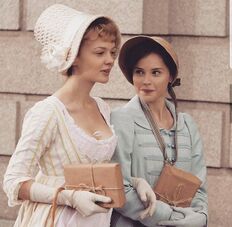
A hundred years later, Isabella Popp tells us, Isabella's seven horrid novels had fallen into such obscurity that they "were often presumed to be invented by Austen." In 1927, "Michael Sadleir, a British publisher, novelist, and book collector, located copies of all seven novels." The last one to surface was Orphans of the Rhine.
This should be a reminder to us that prior to our digital age, finding copies of rare old book was a much more difficult and expensive challenge. Thanks to the internet and thanks to digitization, hundreds of these spine-chilling 18th-century novels are readily available, either for purchase or through your local university or community library.
You can also dive into the world of the gothic novel thanks to Professor Ann B. Tracy and her reference book: The Gothic Novel 1790-1830: Plot Summaries and Index to Motifs.
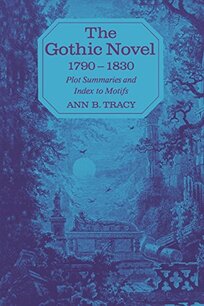
Gothic novels are also part travelogue, with depictions of Italian scenery that most readers of the time could not expect to ever visit themselves, and most of the authors of the novels never saw at first-hand, either. "[T]he one place the protagonist almost never finds himself is at home," explains Tracy.
"Do not imagine that you can cope with me in a knowledge of Julias and Louisas," Henry Tilney says to Catherine Morland in Northanger Abbey. Nor could anyone compete with Tracy's knowledge of gothic heroines; she provides an index for the Julias and Louisas, and for the heroes too. All seven of the "horrid" novels which Isabella recommended to Catherine are summarized in this volume and many more besides.
For fun, let's check out one of the openings of Isabella's horrid novels at random from Tracy's guide: here is The Mysterious Warning, by Eliza Parsons, which deals with two well-born brothers by two different mothers.
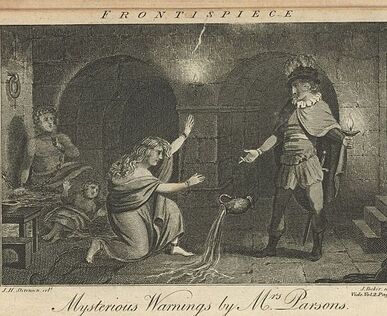
"When Ferdinand comes home on leave, a mysterious voice (belonging to Ernest the discerning servant) tells him to flee Claudina as he would sin and death. She agrees that this warning is justified and goes to a convent without letting Ferdinand know where.
"In the course of subsequent melancholy wandering, Ferdinand finds and rescues a couple who for twelve years have been locked in separate dungeons by a sadistic recluse. The male victim, Count M--, becomes Ferdinand’s companion after his wife decides to go into a convent. They meet two girls, one of whom (Louisa) has been victimized by wicked Count Wolfran, who married, discarded, denied, and imprisoned her...."
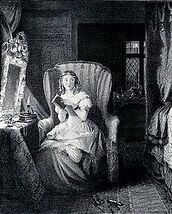
"skeleton, animated; at banquet; in bed with; in closet; costumed; in dungeon; hand of, clutching murder weapon; hanging; in quantity; spectral; in trunk; wearing familiar ring."
I am going to check out the novels listed under "novels, reading, dangers of," to find more examples of those authors who, as Jane Austen complained, degrade "by their contemptuous censure the very performances, to the number of which they are themselves adding." More on the dangers of novel-reading here.
Previous post: Female Domination Next post: A Winter in London
| | As Professor John Mullan points out in this lecture, the Scooby Doo plot, in which the supernatural threat turns out to be a contrivance of the villain, is a direct descendant of Ann Radcliffe's gothic novels. ("And I would have gotten away with it too, if it weren't for you pesky kids!") In A Marriage of Attachment, my second novel of the Mansfield Trilogy, Fanny Price is alone in an empty warehouse at night and is spooked by thoughts of the Ratcliffe Highway murderer, who is at large in London. Click here for more about my books. |
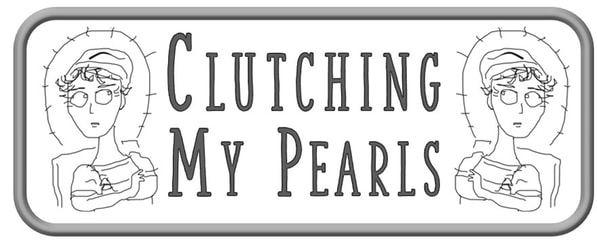
 RSS Feed
RSS Feed